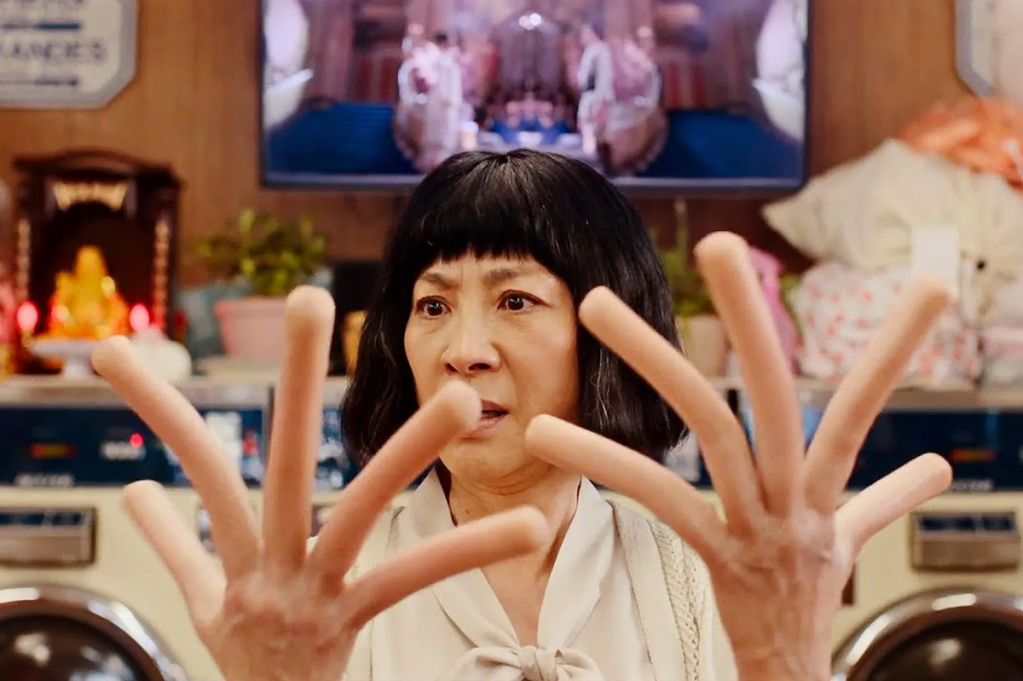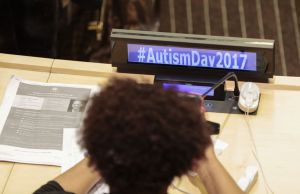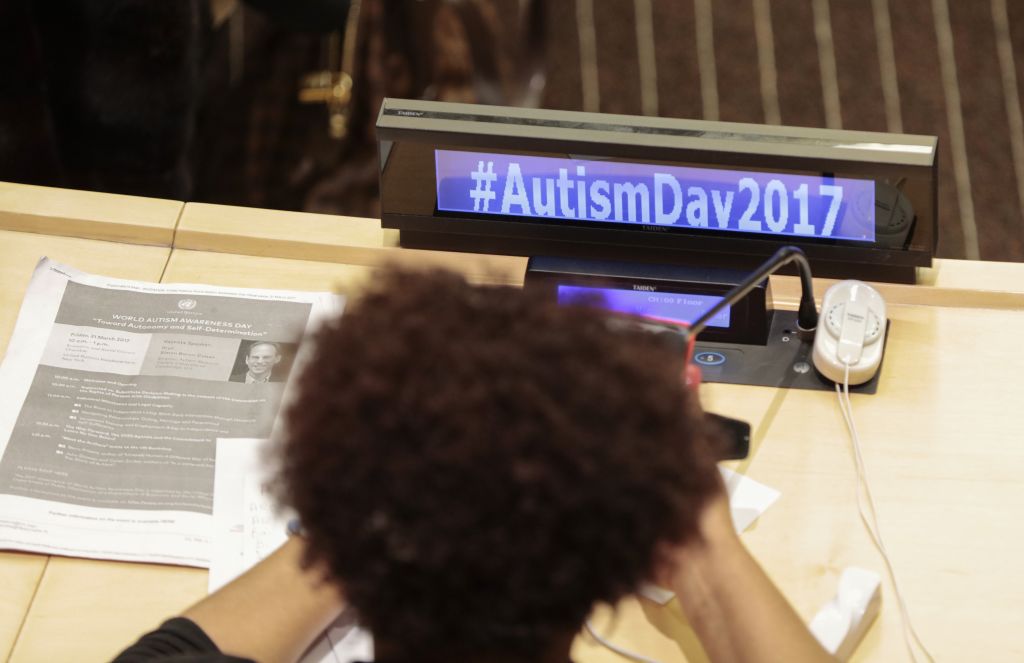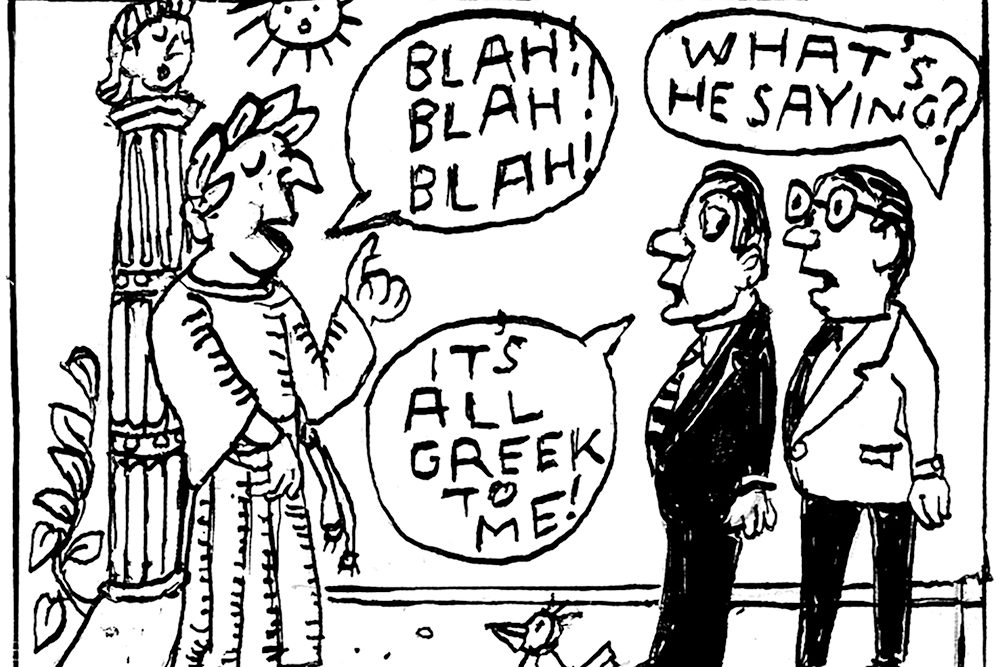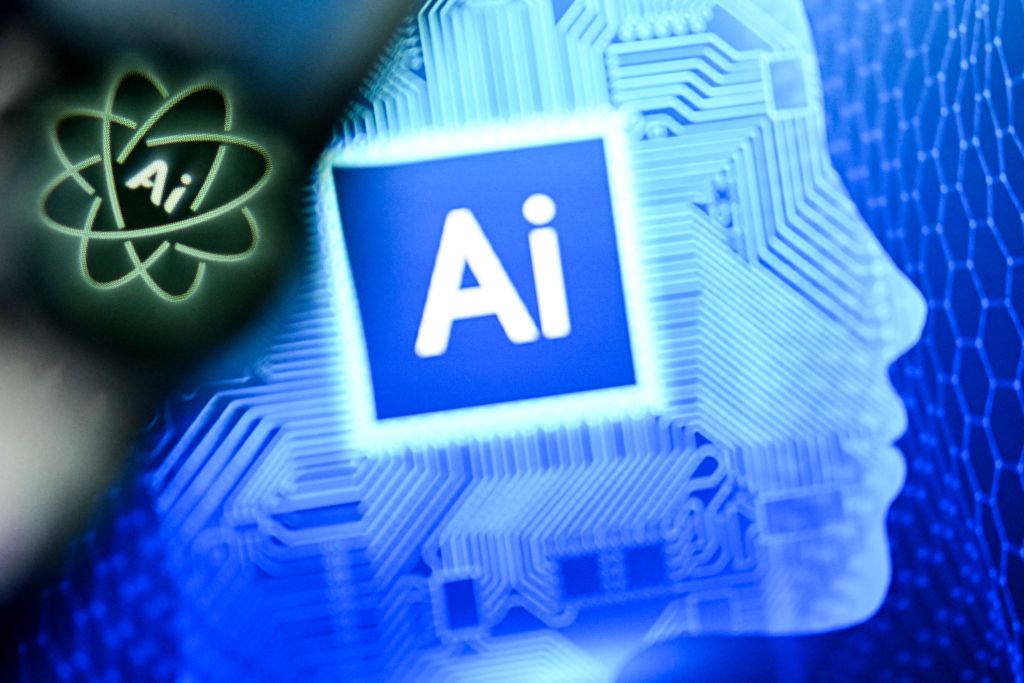The New York Times has called Everything Everywhere All at Once “a swirl of genre anarchy.” It simultaneously works as a tender story of acceptance, an exploration of the pressures of not living up to parental expectations, an existential study on whether or not anything matters, a reminder to be kinder to others, and a love story about reigniting the spark in a marriage that has seemingly run its course. It’s a family drama, a sci-fi mess of multiple universes, a superhero battle to save the world, comedy, and action movie. As Vox‘s Alex Abad-Santos said, “No amount of description — alternate timelines, jumps, existential crises, moms, hot dog fingers, butt plugs, etc. — could ever accurately describe what’s happening at any given moment during this maximalist fantasia.”
But is the movie really so anarchic? It follows Michelle Yeoh’s Evelyn, a laundromat owner who’s miserable with her life. Stuck in a dead-end job with a crumbling marriage to a simple-minded but sweet husband, Waymond, Evelyn also has difficulty acknowledging her daughter Joy’s girlfriend. When Evelyn’s father visits for the holidays, she attempts to hide Joy’s sexuality, assuming he’ll disapprove.
Simultaneously, Evelyn and Waymond face a tax audit from a surly IRS agent. During her audit, Evelyn taps into parallel versions of herself across universes. In doing so, she sees how her life could have been if she never wed Waymond: she has hot dogs for hands, she’s a big rock, she’s a top restaurant chef, a famous singer, a karate star actor. Evelyn learns that she is the only one who can save the multiverse from a mysterious and spectacularly dressed figure who appears dead set on destroying the world with a black hole everything-bagel. This figure is revealed to be Joy’s nihilist alter ego, Jobu Tupaki, who has channeled her pain into a burning desire to implode the multiverse.
Two things arise from this short description: Evelyn’s tension with Joy is the emotional axis of the film, and most of the action takes place in an IRS building. For small-business owners like Evelyn, the IRS is a traumatic social agency which calls the shots and determines their fate. The superego-evil of this agency is embodied in Deirdre Beaubeirdre, played by Jamie Lee Curtis, who interrogates and harasses Evelyn about her tax report — the tautological weirdness of her name is in itself significant. During the long interrogation, Evelyn often dozes off, and she is awakened from her dreaming a couple of times. The hypothesis that we are not really dealing with multiple realities imposes itself: the “real action” takes place in the IRS office, and Evelyn finding herself in alternate realities are her dreams and fantasies. At the film’s end, we return to the IRS room reality, and the triple reconciliation (with Joy, her father, and Deirdre) takes place.
So why would the destruction of multiverses (intended by Jobu) be a catastrophe? The answer is simple: because our reality needs fantasized virtual supplements to maintain itself and function properly. Imagine the same film as a simple realist narrative without the jumps into alternate realities — just the “real” story of Evelyn and her family caught with the problems of the IRS, parents-children tensions and divorce. The result would not just be boring, but the triple reconciliation at the end would have been totally unconvincing — this reconciliation could only take place through the mediation of fantasized alternate realities. So far so good, we might say. But what chips off the subversive edge of the film is its false humanist ending: the Leibnizean insight that, in spite of all troubles, we live in the best of possible worlds. Dialectical as it may appear, the answer to the question of the meaning of life that Everything Everywhere All at Once proposes — that life acquires meaning only after we fully admit its meaninglessness — is false. But why? Consider film reviewer Chris Lambert’s reading of the film:
Thematically, it gets at the bagel — Jobu Tupaki’s everything bagel that Alpha Waymond fears will destroy the universe. Jobu explains she used her powers to put everything onto the bagel. The result is negation. A black hole. Everything equals nothing. The same thing happens with colors. Take a box of 256 crayons, draw a circle, then use every single crayon to fill the circle… By the end, all the brightness will be gone. You’re left with something dark and gloomy. It’s crushing. Jobu Tupaki embodies this negative state of being. When you experience everything, the highs and lows wash out. For every miracle, there’s catastrophe. For every joy, there’s tragedy. You become numb to it all. Novelty wears thin, wears off, and you’re left feeling nothing. The only thing left is to become nothing.
Jobu Tupaki’s nihilism echoes what Hitchcock said: “A glimpse into the world proves that horror is nothing other than reality.” Among his own films, Hitchcock’s favorite was Shadow of a Doubt, and the evil character in the film, Uncle Charlie, was clearly a cipher for Hitchcock’s own misanthropic worldview. Just recall the terrifying speech where Uncle Charlie decries to his niece: “Do you know the world is a foul sty? Do you know, if you rip off the fronts of houses, you’d find swine? The world’s a hell.” Truffaut suggested this could actually be Hitchcock, writing that it “is obviously Hitchcock expressing himself in Shadow of a Doubt when Joseph Cotten says the world is a pigsty.” But how do we pass from here to the optimistic conclusion? Lambert continues:
But there’s a flipside to that, right? While Evelyn initially understands where Jobu Tupaki’s coming from with all the ennui and nihilism, and begins to fall into the horror of it all, ultimately, she rejects that point of view. Instead of being defeated the way Jobu Tupaki is, Evelyn finds peace. Having been everything and everywhere, she’s finally satisfied to just be one thing, in one place. Her breakthrough leads to her saving her daughter and the two of them coming to terms with life’s immensities. It’s like having tried every crayon from the 256 box, you realize it’s OK to pick one and be happy with that one.
This is where our film fails, and its failure is palpable already at the formal level. What characterizes a great film is that its basic message (often in contrast with the narrative line) is rendered by the peculiarities of the form itself. When watching The Shield (a TV series better than the much more celebrated Wire), you cannot but note its formal features: shaky hand-held camera, short cuts, the often sudden zooming forward to a face in one continuous shot instead of a cut to a close-up, fast turns of the camera from one face to another of the two persons in conversation instead of the shot-countershot procedure, establishing shots from above. These features in themselves render a certain subjective stance, that of a nervous and dynamic daily life of the special police unit portrayed in the film. They do not stick out as exceptions, like the spectacular long moving shots in Hitchcock; they are everywhere, written into the texture of the entire narrative.
Contrast The Shield with Jeanne Dielman. The film’s form (static camera, long shots, no point/counterpoint exchange) directly renders Jeanne’s subjectless routine, the absence of a proper intersubjective dynamic — or is there a utopian moment in it? The static form would fully fit only her relaxed peace after the murderous outburst, while till that moment even the dullest repetition is permeated by underground tension which finally explodes. It’s at this point that we should locate the weakness of Everything Everywhere All at Once: in spite of all the dazzling dynamics of mixing genres, of sudden shifts from intimate drama to karate battle, the form of the film follows old standards.
This fidelity to standard form is just another aspect of the fact that, although the film is playing with multiple realities, this multiplicity remains closely rooted in the traumas and deadlocks of our single “true” reality. The topic of multiple realities, of course, got a new boost with the reference to quantum mechanics which distinguishes the superposition of multiple virtual versions of an event from our single reality which arise when the virtual multiplicity “collapsed” into one real event. The link between Everything Everywhere All at Once and quantum physics was already noted; however, the Everything Everywhere version is much less radical than the scientific notion of the superposition of states.
In quantum theory, one version of multiple superpositions “collapses” into our common reality, but there is no Fate or victory of the best in this: the collapse happens in an irreducibly contingent way. There are collapses which are (from our standpoint) better or worse, even catastrophic, but it all depends on pure chance. So to say “it’s OK to pick one and be happy with that one” is false because it is not us who picks one; nobody makes the choice, it just happens. The awareness that other versions might have happened should mobilize us for a struggle, not lull us into resigned satisfaction.



